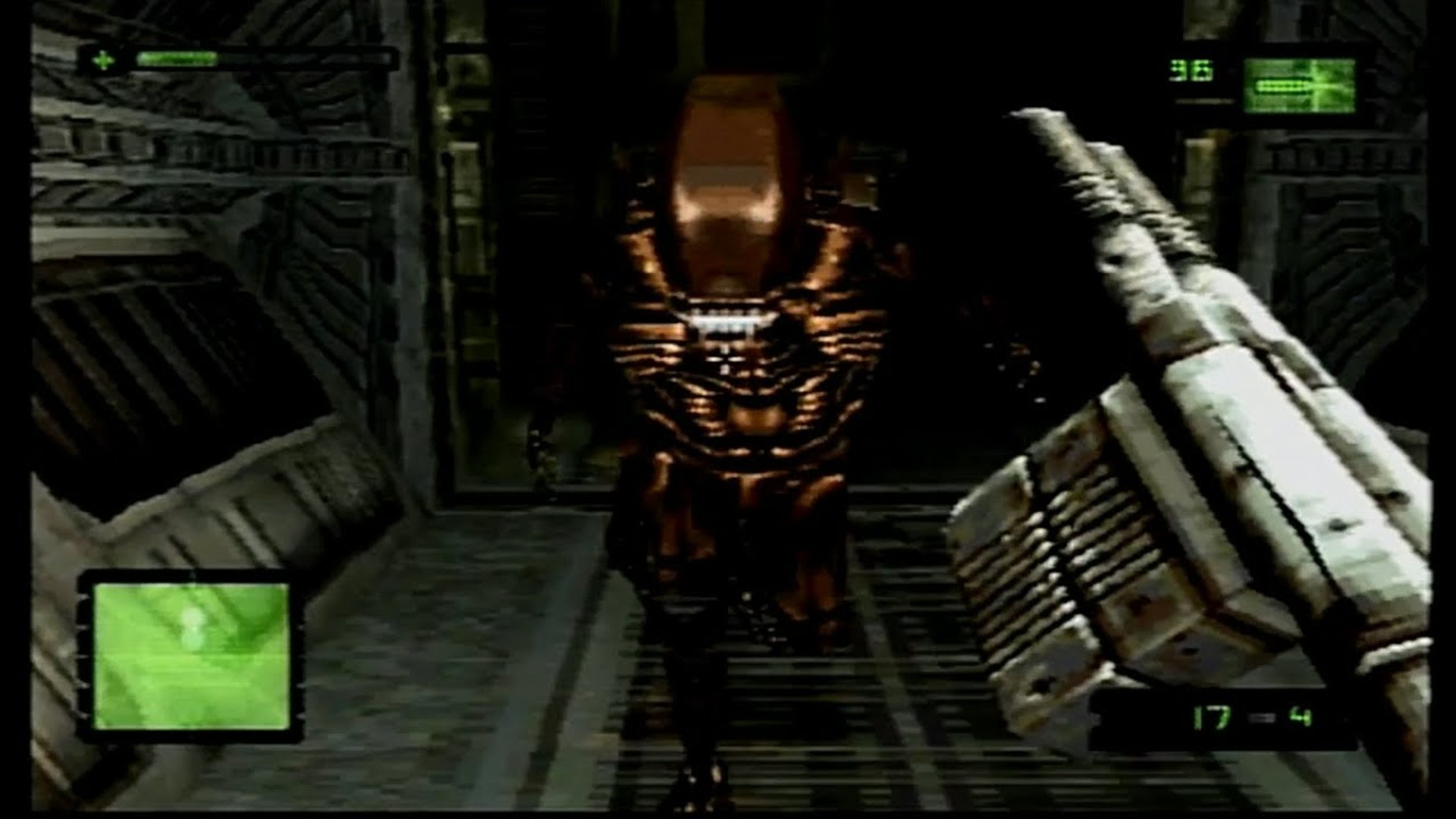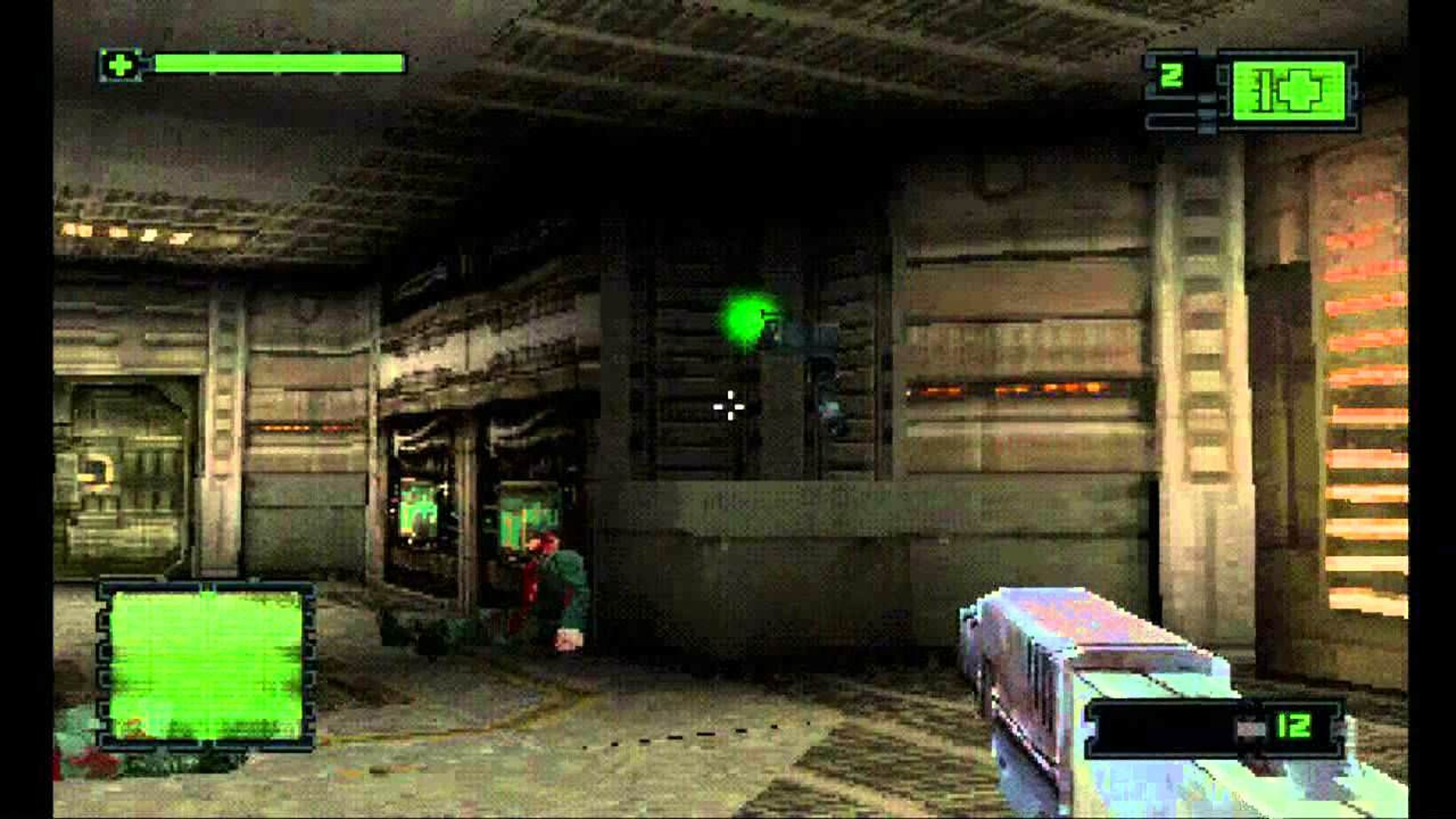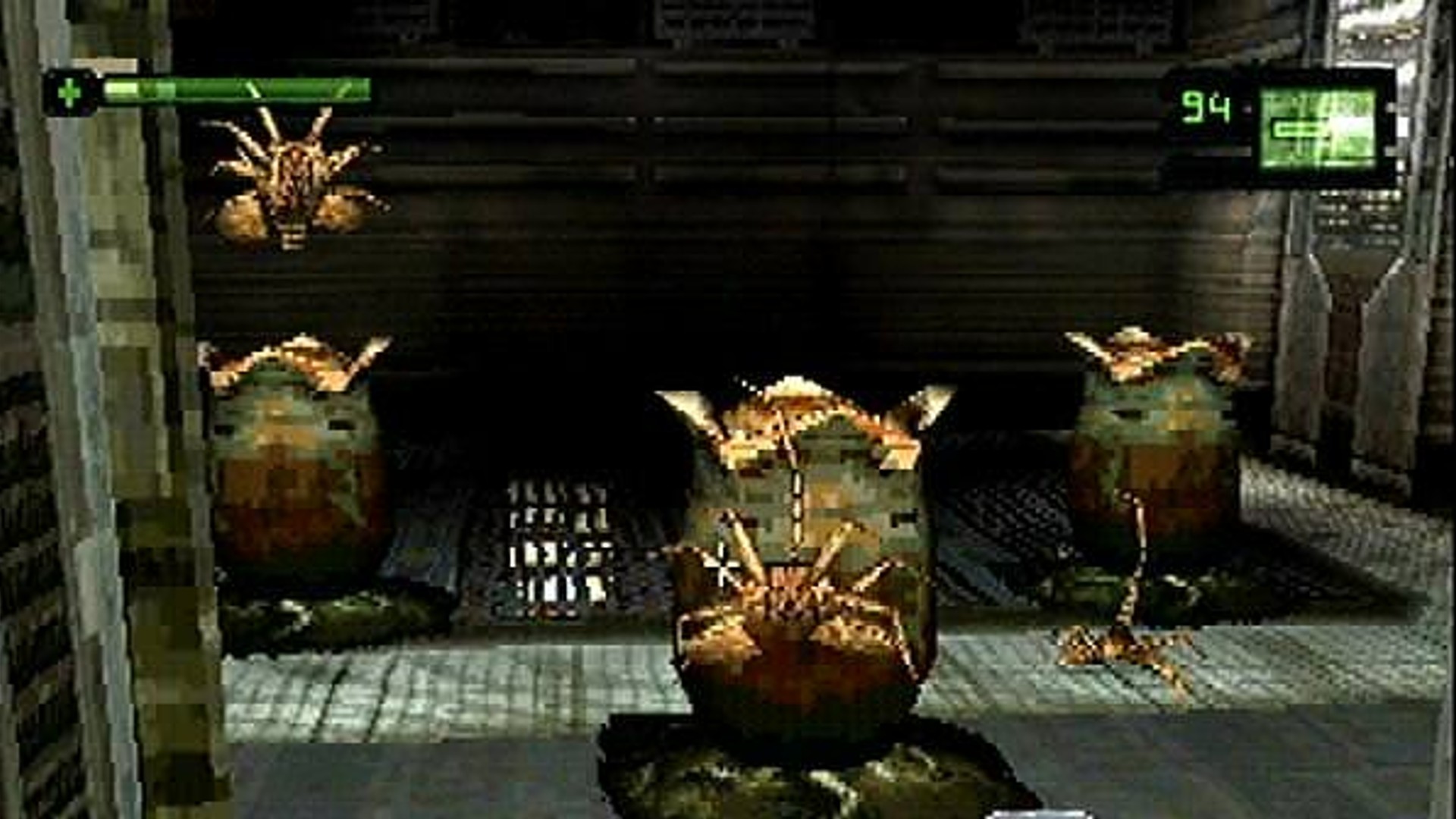The making of Alien Resurrection: Why did the high-profile movie tie-in arrive three years late?
Lost in space

The fourth movie in the Alien sci-fi horror series appeared in cinemas five and a half years after the melancholic Alien 3, and by the late-Nineties, several Hollywood film studios were having a go at videogame publishing, rather than licensing their IP to others. 20th Century Fox set up Fox Interactive in 1994, founded by former Time Warner Interactive executive Ted Hoff. Over the next nine years, Fox published nearly 50 titles including original games as well as TV and film properties based on Die Hard, The X-Files and Alien Resurrection.
Working at Fox Interactive in Los Angeles in the mid-Nineties was experienced games producer Gary Sheinwald, who was a close friend of Jez San, founder of Argonaut Software in the UK. Started in the early Eighties from his bedroom, Jez had developed Argonaut into a multimillion-pound plc by the late-Nineties, creating globally successful games like two Starglider titles, flight simulator Birds Of Prey and helping Nintendo to develop the Super FX GPU for the SNES console, as well as the phenomenally successful Star Fox game that first used it.
When the idea of a game based on Alien Resurrection was first proposed at Fox, Gary knew who to recommend. Argonaut already had a working relationship with Fox, thanks to its multi-platform 3D title Croc: Legend Of The Gobbos. Most of the development team that had recently completed the unrelated game Alien Odyssey for Philips Media Inc were moved onto the official Alien Resurrection game. At that early stage the team had little information on the plot, and so Argonaut used the time to develop a game engine, employing a top-down 3D view, similar to the recent PlayStation release Loaded. As it happens, that approach fitted in with early versions of the screenplay, as Gary recalls. "The game was initially developed as a top-down parallax scroller because the original movie idea was for the main spacecraft to be like a tower block in space, on many levels."
From the top down


If you want in-depth features on classic video games delivered straight to your doorstep, subscribe to Retro Gamer today!
Work began on the game levels as a research and development exercise, and a robust top-down system complete with a level editor was in place early on. Argonaut also got to work on a game that was to briefly appear in the film, and that work initially took precedence over the licensed game that was to follow. By early 1997, film production was well underway in Hollywood, making it the first Alien movie in the series not to be made in England.
Back in the UK, armed with a huge collection of reference material including 35mm stills, the top-secret screenplay, production art, and even some rough VHS footage, Argonaut could shape its game more accurately to fit the movie. However, mirroring the stylistic changes being made by the director Jean-Pierre Jeunet to the film’s tone, a major change in approach was also requested for Argonaut’s game. "When Tomb Raider became a huge hit, the Alien Resurrection game was changed to a third-person action adventure," Gary explains pragmatically.
That was all well and good, but the mixed messages were not helping Argonaut get a clear vision for what the publisher wanted, as Jez elaborates. "What they originally asked us to do, we did, and then we all decided to throw it away and start again from scratch. Originally it was a top-down Gauntlet meets Alien Breed game, but then we went for the third-person shooter." The team was not starting entirely from scratch though. The 3D engine developed for Argonaut’s completed Croc: Legend Of The Gobbos platform game was used as the launching point. Building a rudimentary representation of Sigourney Weaver as Ripley 8, the main figure went through various iterations as development progressed, until Argonaut had a main character that was satisfactory.
The team then had to design representations of other main characters from the movie, including Christie, Distephano and Call, for specific levels. The game continued evolving, with changes to the inventory system, level designs and graphics happening on a regular basis. Another early build image. It shows Ripley 8, one of several characters you could play. Near the start of the movie, the audience is introduced to the crew of the Betty with a glimpse of an arcade videogame called Atom Zone. Argonaut got to design and write that game, so it could be used during filming.
Sign up to the GamesRadar+ Newsletter
Weekly digests, tales from the communities you love, and more
"There wasn’t a deal for the game that appeared in the movie. I’m sure we signed a release, but there wasn’t a contract, and we didn’t get paid for it," reveals Jez San. "Gary Sheinwald insisted we got a screen credit though, which was all we got. We did quite a bit of work on it, effectively for free. Originally, we had the whole Atom Zone game playable, but the director needed a very specific set of occurrences in the game, and for it to be reproducible on demand. In the end we captured a demo, so that it wasn’t playable but was exactly what the director required."

The fictitious arcade machine Atom Zone appeared on-screen for barely ten seconds in the theatrical version, and the only in-game footage shown was of a spacecra exploding in a ball of fi re. However, there was a chance the playable game might have lived on. "At one point there was talk of bundling Atom Zone free with the Alien Resurrection game, but that fell by the wayside due to the enormous eff ort of creating the main game," admits Jez, and whilst the Atom Zone cabinet can be tantalisingly seen on the Betty level in the finished PlayStation game, it remains unplayable. system in use. Ripley 8 is certainly well-armed. Ripley 8, one of several characters you could play.
Unfortunately, all these changes meant that development continued throughout 1997 and 1998, long after the film had departed cinemas, and various developers came and went at different stages of the project. The general feeling of disappointment over the film dampened enthusiasm, but Argonaut remained committed to doing as professional a job as it could. Early versions of the Tomb Raider-style version included the ability to switch to a first-person view by pressing and holding a shoulder button on the PlayStation controller. The player could look around by moving the left stick at the same time, but they could not move the current character in that view.
Later, a section where the player had to crawl through air vents was added, temporarily switching to a first-person perspective that did allow for movement, and the effectiveness of that approach became instantly apparent. The claustrophobic environment, and the anticipation of not seeing what was around the corner resulted in the entire game being switched to that view permanently. “Technically the new perspective wasn’t a huge change as we had a very general-purpose 3D engine, so the changes were mostly in the level designs,” explains Jez. “I think the main decision to move it to first person was so you could have stuff jump out at you, which felt more, well, Alien-like.”
Indeed, the 3D world employed for the third-person view was the same as what the player saw from that first-person perspective in the finally released game. Unfortunately, the change to first-person led to some levels from earlier drafts of the screenplay, including the hydroponics and hospital sections, being removed. Initially, if the player was impregnated by a Facehugger, the idea was to speedrun to the nearest medical bay to get the embryonic alien removed before it was too late. That idea was ditched in favour of the portable autodoc unit, which did the surgery in situ. Development sailed through 1999 and despite PR from Fox Interactive that promised a release in Fall 1999 for PlayStation and Windows 95/98, Alien Resurrection managed to miss the domestic DVD and home video releases as well as the promised Fall 1999 release date.
Argonaut’s Alien Resurrection PlayStation game was finally completed in summer 2000 and was published in the run up to Christmas that year. However, neither the Windows 95/98 PC version nor the intended Sega Saturn version were ever finished, let alone released. The final version featured ten expansive levels and four characters to switch between as the player made progress. Levels were mission-based, involving releasing overheating escape pods, killing all the previous failed Ripley clones, battling Facehuggers, alien warriors, military soldiers, an alien queen, the albino Newborn and ultimately escaping the USM Auriga in the Betty and blowing everything up in the process.
Stomach turning

"Looking at it cold, most people would assume the game was running on the new PlayStation 2. Alien Resurrection utilised the SCPH 1200 DualShock controller to great effect, allowing the player to move with the left stick and look around the 3D environment using the right stick."
One level included swimming, simulating the underwater scenes from the movie, and echoing the swimming sections of the first Tomb Raider game. Specially recorded speech from actor Steven Gilborn, who voiced the main computer system called Father in the movie, was included. Short snatches of speech were recorded by other soundalike actors, but whilst they were included in development versions, most of the speech was removed from the final release, other than their grunts and groans in reaction to injury during the game. Inevitably, the length of time taken by Argonaut to get the game finished took its toll. The severely extended development period, and the poor box office performance of the movie had a knock-on effect on people’s appetite to play the official game.
Also, the original PlayStation console’s popularity was starting to fade, due in part to the emergence of the brand-new PlayStation 2 console, which debuted at the same time as the Alien Resurrection game was published. You could argue that the odds were already stacked against the project. Alien Resurrection was not the first licensed Alien game, and it was not the first Alien game to employ that first-person viewpoint either. Back in 1986, Activision UK’s 8-bit game based on Aliens was from the rudimentary viewpoint of the player being in the locations. In 1994, Rebellion employed that view for its Alien Vs Predator game for the Atari Jaguar and its later Aliens Vs Predator game for the IBM PC released in 1999 to great acclaim, which somewhat stole Alien Resurrection’s thunder. That game had much more variety, a multiplayer mode and was closer in feel to the more popular Aliens movie that was released in the mid-Eighties. Even earlier, Probe Software unleashed Alien Trilogy for the Sega Saturn, Sony PlayStation and IBM PC in 1996.
That game also employed the first person viewpoint that Argonaut’s game eventually employed. However, the game that Argonaut finally produced was technically superb. Looking at it cold, most people would assume the game was running on the new PlayStation 2. Alien Resurrection utilised the SCPH 1200 DualShock controller to great effect, allowing the player to move with the left stick and look around the 3D environment using the right stick. Pun definitely intended, that control system was alien to most people, and they initially struggled with it. The game was also one of the few to support the PlayStation mouse controller, which gave the player a much finer method for looking around in the first-person perspective, aiming and shooting their weapons and using items they encounter throughout the game, like interacting with security panels, buttons, wheels and so on.
Looking back at the experience over two decades later, Alien Resurrection is not a project Jez recalls with much fondness. His personal involvement might have been at arm’s length, but the game’s elongated gestation period was part of a chain reaction that had dire consequences for Argonaut. “The whole Alien game turned out to be a horrendous abortion. The changes we made were for the betterment of the game, but it caused huge delays that cost us a fortune that we never earned back.”
“Alien Resurrection was just one of a few film licence games we had in development at Fox,” admits Gary. “It was problematic and very late due to being rebooted twice. The result though was a decent first-person shooter on the PlayStation, which I feel paved the way for other similar games on consoles using the DualShock sticks.” Alien Resurrection on the PlayStation is a good example of developers squeezing every last ounce out of the hardware, at a point where many developers were already shifting their focus onto the PlayStation 2 and other next-gen consoles. The game looked and sounded great, offered plenty of challenging levels to explore, and had tons of atmosphere, which is really all you could want from an Alien game. It is true that some people found the control system difficult, and that it could have done with a multiplayer mode, but it is an under-appreciated PlayStation first-person survival horror game that deserved more success than it got.
This article first featured in Retro Gamer magazine - subscribe today!
Retro Gamer is the world's biggest - and longest-running - magazine dedicated to classic games, from ZX Spectrum, to NES and PlayStation. Relaunched in 2005, Retro Gamer has become respected within the industry as the authoritative word on classic gaming, thanks to its passionate and knowledgeable writers, with in-depth interviews of numerous acclaimed veterans, including Shigeru Miyamoto, Yu Suzuki, Peter Molyneux and Trip Hawkins.



